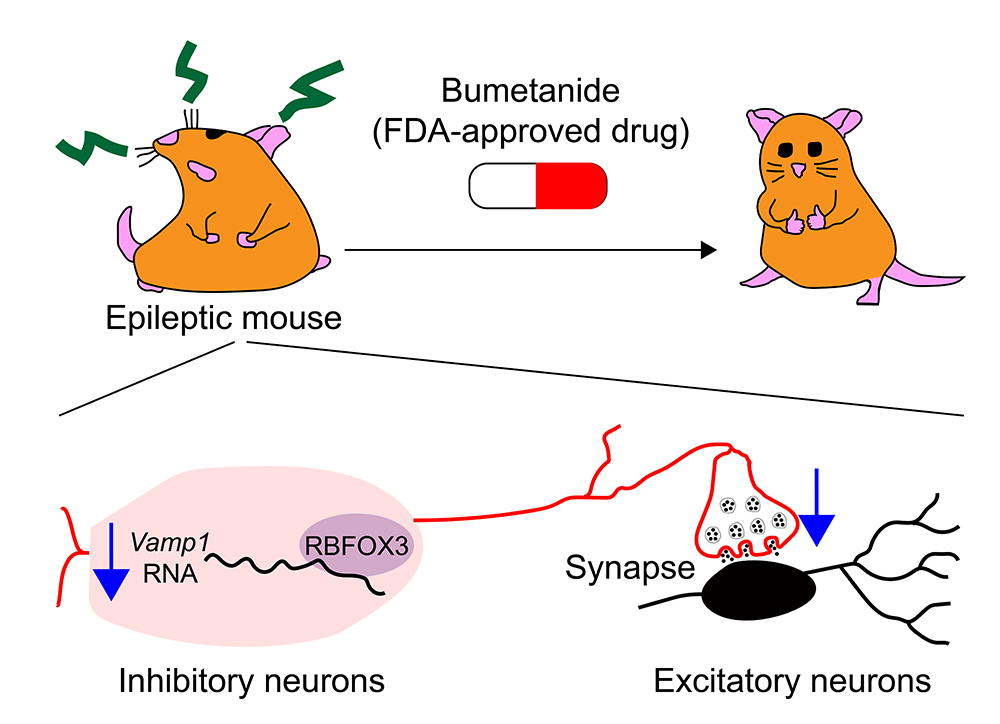
Bumetanide rescues seizure phenotypes from Rbfox3 knockout mice. Mechanistically speaking, RBFOX3 mediates seizures via regulating Vamp1 expression in inhibitory neurons, excitability of excitatory neurons, and inhibitory synaptic transmission.
Epilepsy is a common brain disorder; however, its pathogenic mechanisms were not clear. Mutations and deletions of RBFOX3 were found in persons with epilepsy but the mechanism of seizure mediation by RBFOX3 remains unknown. Now, in an article published in PNAS on August 11, 2022, Dr. Hsien-Sung Huang and his team from Graduate Institute of Brain and Mind Sciences revealed the clues to the pathogenesis of RBFOX3-linked epilepsy.
To elucidate what underlying mechanisms drives RBFOX3-linked epilepsy, De-Fong Huang, a master graduate in Huang’s lab, led a series of experiments to pinpoint the whole picture. First, RBFOX3 mediates the expression of VAMP1, an inhibitory neuron-specific protein, decreases the inhibitory strength of inhibitory neurons, and increases the excitability of excitatory neurons. Imbalance of excitation and inhibition therefore contributes to seizure activity. Second, due to the heterogeneity of inhibitory neurons in brain, it is very important to clarify which subtype of inhibitory neurons plays the key roles in RBFOX3-linked epilepsy. With the help of cell-type-specific conditional knockout mice and other behavioral, electrophysiologic, cellular and molecular approaches, neuropeptide Y (NPY)-expressing inhibitory neurons turn out the be the key player. Finally, an FDA-approved drug, bumetanide, can successfully rescue seizure phenotypes due to Rbfox3 deletion. Because of the potential broad interest, our study was selected into PNAS Showcase.
Huang’s group is now studying the roles of NPY-expressing inhibitory neurons in the pathogenesis of epilepsy. Hopefully, someday in the future, we will get more understanding of this disorder and develop new therapeutic strategy for it.
This work was supported by National Science and Technology Council and National Taiwan University. This study was collaborated with Drs. Susan Shur-Fen Gau and Hsiang-Po Huang from National Taiwan University, Dr. Cheng-Chang Lien from National Yang Ming Chiao Tung University, and Dr. Yi-Shuian Huang from Academia Sinica.




